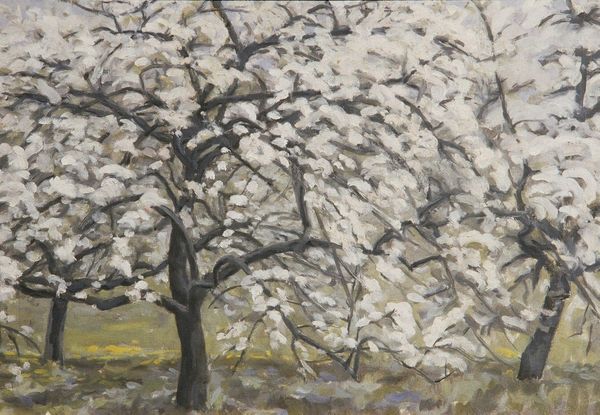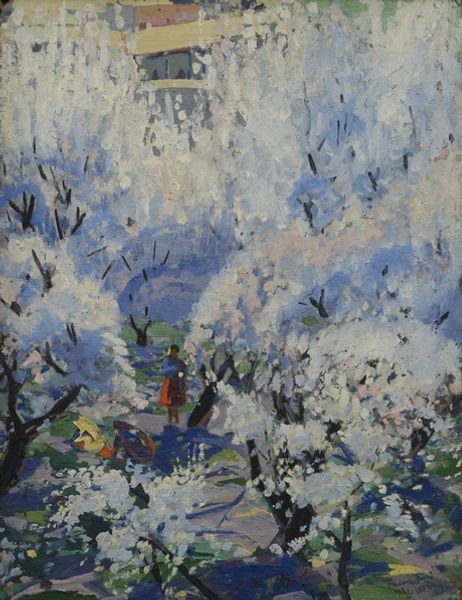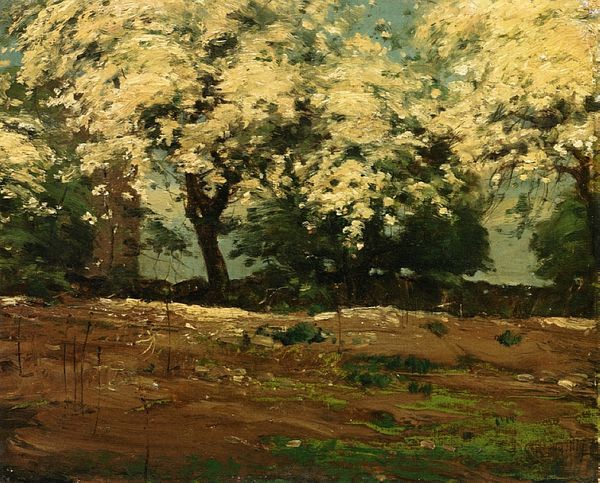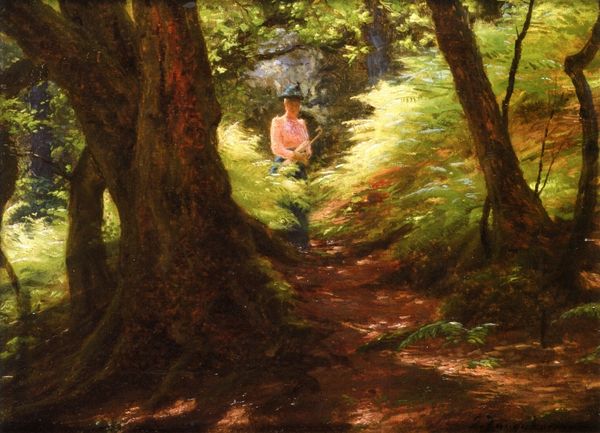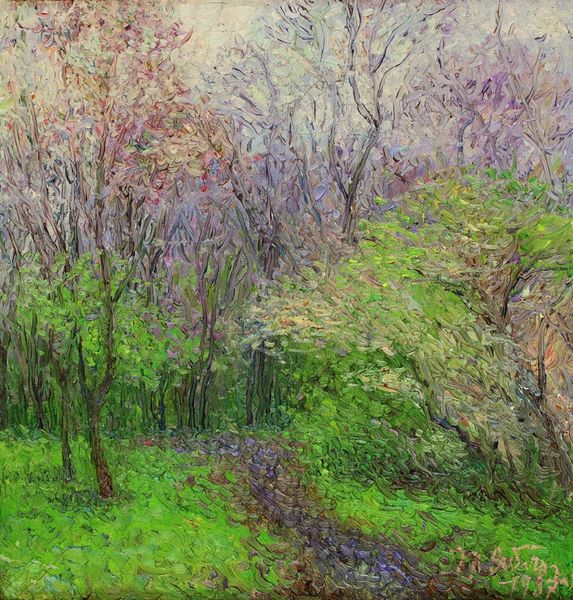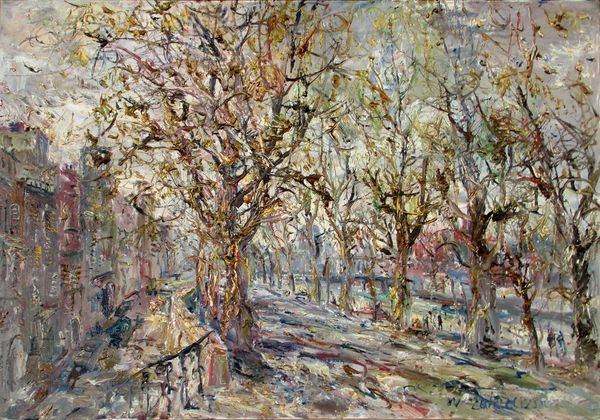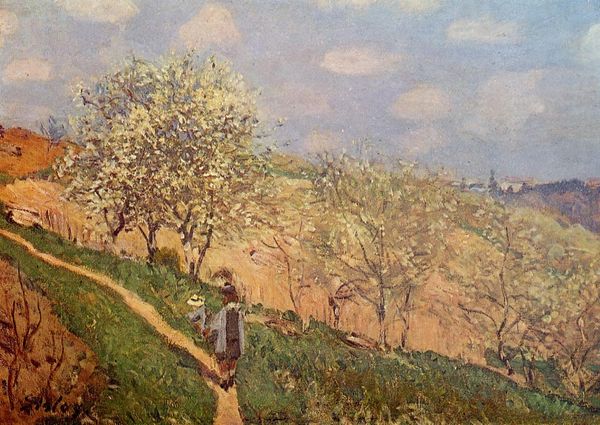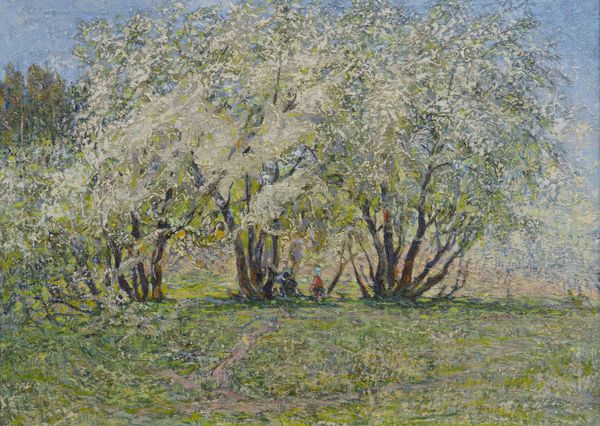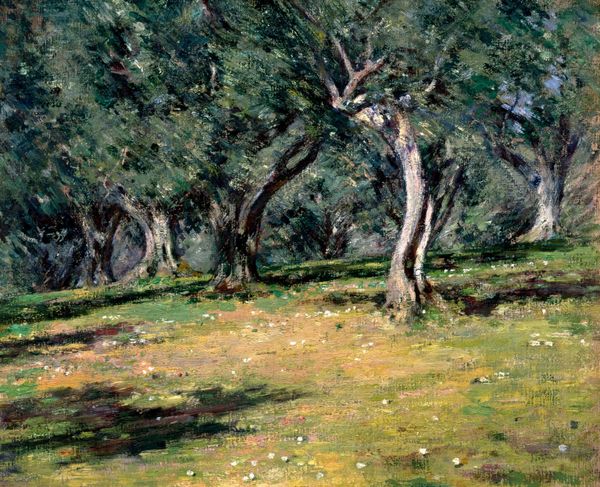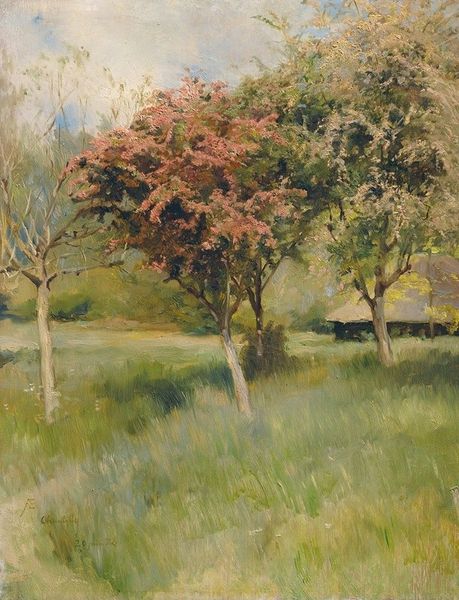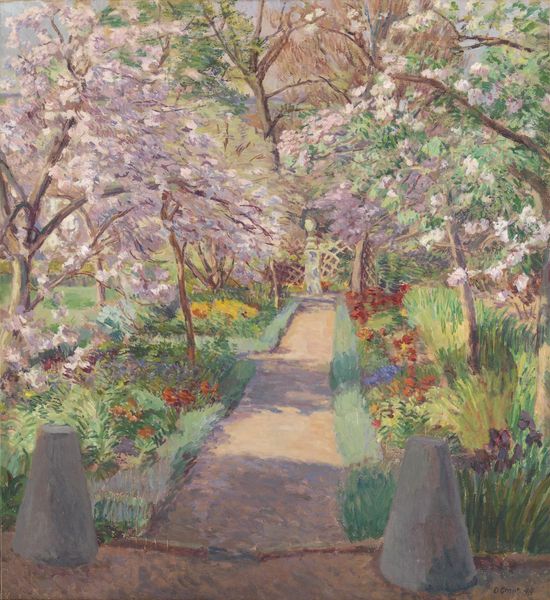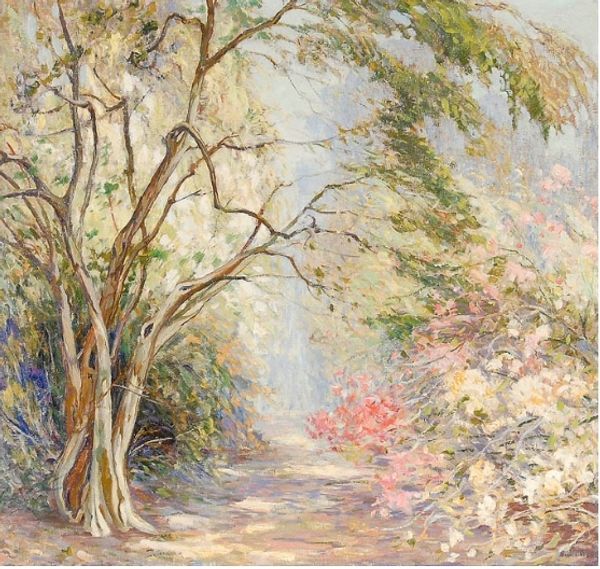
Dimensions: 54.9 x 51.1 cm
Copyright: Public domain
Editor: We’re looking at Theodore Robinson’s "Blossoms at Giverny," painted in 1893. It's an oil-on-canvas painting capturing a scene at Giverny. I’m immediately drawn to the light. How does the composition strike you? Curator: The most arresting formal quality is indeed the luminosity achieved through Robinson’s layering of impasto. Notice how the white blossoms create dynamic visual rhythm. The surface texture is quite crucial in analyzing the work's essence. Robinson strategically applied layers to define form and light. It brings structure. Editor: So the way he put on the paint isn't just about showing us the flowers? It's about the structure of the whole image? Curator: Precisely. Examine how the brushstrokes in the foreground contrast with the implied forms of the figures and background. Observe how the directionality and density of marks work to guide the viewer's eye and articulate the scene’s depth, spatiality, and rhythmic arrangement of colour masses. Can you spot any clear orthogonals or vanishing points? Editor: I see that there aren’t many lines that directly point our eye to the back of the frame. Rather, it is the use of softer tones for the people and distant trees. I wonder why the painting has that muted palette. Curator: Good observation! Considering that there are three whites competing in the image--clothing, foliage, and overcast sky, their closeness in tonal range creates an unusual visual consonance. Note too the striking contrasts in chroma, hue, and lightness! These formal elements help in our understanding of Impressionism. Editor: So it's the painting's intrinsic arrangement—the colors and textures—that creates this immersive sensory impact! I now understand what makes Robinson's piece noteworthy! Curator: Yes. And how these devices create the formal beauty and impression, irrespective of the ostensible subject depicted.
Comments
No comments
Be the first to comment and join the conversation on the ultimate creative platform.
